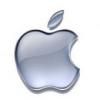-
Posts
10068 -
Joined
-
Last visited
-
Days Won
569
Content Type
Profiles
Articles, News and Tips
Forums
Everything posted by Hervé
-

[SOLVED] Dell E6220 (Mavericks): wifi/bluetooth/audio issues
Hervé replied to osxrookie's topic in The Archive
Re: Bluetooth, disable the search in the BT PrefPane. -

[SOLVED] Dell E6220 (Mavericks): wifi/bluetooth/audio issues
Hervé replied to osxrookie's topic in The Archive
There is no support whatsoever for cards based on that Broadcom chip (e.g.: DW1530, DW1540). https://osxlatitude.com/index.php?/topic/2120-inventory-of-supported-and-unsupported-wireless-cards/ myHack v3.3.1 fully supports Mavericks installation but the buck stops there. The pack you've referred to comes off my myHack-based E6220 guide. If you've properly installed it at the onset on the myHack USB installer, myHack will install it automatically at the end of the Mavericks installation. It may not install the boot loader though, but that's easy to sort out: boot the finalised installation via the USB installer, then download and install a recent Chameleon (or Enoch) package. -
Tried the double keypress to remove CAPS lock? That's necessary under Sierra.
-
Erm... obviously, the MacPro5,1 was the newer machine, not the MacPro4,1. The above statement was made with regards to CPU power management, as clearly stated. In that respect, MacPro4,1 is closer to the Z600 than the MacPro5,1. Given the known issues linked to MacPro4,1 SMBIOS, MacPro5,1's might be better suite and that's what was hinted... SMBIOS profiles are usually chosen on such criteria as CPU models or graphics cards/GPUs, hardly on memory speed.
-
I've noticed that, since 10.12.3 (can't say for earlier Sierra versions), the DVI patch no longer seems to work for DVI secondary output. My DVI connected screen remains undetected after startup (repeated behaviour off 2 x different types of docking station/port extender). I can only get DVI output by booting my laptop with lid closed, i.e. with single display output to DVI. Edit: 05 Sep2018 DVI output recovered in Sierra and High Sierra with AppleGraphicsDevicePolicy kext patch as described in post #5 below.
-
Ok, so it is a DW1830... It may not work 100% OOB on the basis that it's not an Apple device. You'll have to tell us... Can you confirm the PCI ids (wireless AND bluetooth)? According to wikidevi, you should have: wireless = 14e4:43ba bluetooth = 0a5c:6410 Wireless device id 43ba is supported by AirPortBrcm4360 PlugIn of IO80211Family kext since Yosemite (it's present in the Info.plist file of the kext). As such, you can expect wifi to work OOB. If it did not, a simple DSDT patch to declare compatibility with Apple's own BCM94360 devices (id 43a0 for instance) should suffice. Faking Apple's BCM94360xx id through Clover may work too. For the Bluetooth, I expect you'll probably still require the Brcm firmware patches. Experiment by yourself, see how it goes and report back... NB: changed thread title to reflect the related hardware here...
-
Indeed, that sounds like the issue is your Windows USB media, not the HDD.
-
Won't any Windows installer allow to wipe off any disk partition and start afresh?
-
It doesn't. Z600 is based on Intel chipset 5520 and the integrated ICH9/ICH10 I/O Controller supports USB2.0 ports only.
-
"Wrestling with the system"... very likely to begin with, it's a Skylake platform afterall. "forever"... who knows? Check whether your AMD FirePro card is supported or not. Integrated Intel HD P530 may be supported by faking regular Intel HD 530. NVMe SSD may require driver and/or patch. Your Intel wireless is not supported and would require to be replaced by an OS X compatible card/dongle. There are already several threads related to the Precision 7x10 range; I suggest you read them up.
-
If it's an Apple model, expect it to work OOB without any patches or add-on kexts. If it's not an Apple's model (eg: DW1830), then you may still require all of those kexts and patches. Just read-up what Rehabman's described on his repo/blog.
-
More likely to be a USB issue. Make sure you've renamed your USB controllers from "EHCx" to "EH0x" in the DSDT (actual DSDT file patching or Clover on-the-fly patch) and you use a USB injector kext (own-built or Rehabman's USBInjectAll).
-
I assume your audio interface is USB connected. Check your BIOS to USB Wake option and, if enabled, disable it.
-
The HP Zx00 workstations must be something like 8yrs old now...
-

Best way to remove Hackintosh and Clover Dual Boot
Hervé replied to sahilsaid's topic in The Archive
It's not really a Hackintosh matter. Just remove the partitions from Windows, using the DiskManager tool. You'll then be able to reformat the recovered disk space to NTFS or even extend your windows partition if it's the 1st one on disk (I mean before the OS X partition). Once you remove the EFI partition, you'll probably find you'll have to re-instate your MBR, so be ready to boot from your Windows installation media to repair this. -
What happens when you press Fn-Insert multiple times?
-
Dev Micky1979 @IM just released a new Enoch boot file r2851 that includes a number of fantastic new developments, including on-the-fly kernel + kexts patching facility. This allows similar mods to what was restricted to Clover until now. Ace! http://www.insanelymac.com/forum/topic/231075-chameleon-23svn-official-pkg-installer-binaries/page-204?do=findComment&comment=2376053
-
And its purpose is to support USB2/USB3 multiplexing over USB3.0 ports, i.e. manage USB2.0 devices through the EHCI driver instead of the XHCI driver.
-
Good; please note that FakePCIID_XHCIMux does not operate without FakePCIID kext; well, afaik.
-
If you want them cached, they must go to /L/E. This is faster to load. If you placed them in Clover's EFI, they'll be injected at startup, not cached and you won't see any traces of them in SysProfiler for instance.
-
No support for such tools here... You can Google for ways to create a OS X USB installer from Windows. I've never tried it myself but I believe there are a few ways. You'll find examples at InsanelyMac. Ex: http://www.insanelymac.com/forum/topic/288795-guide-creating-os-x-usb-installer-using-a-windows-pc-only/?do=findComment&comment=2012539 The alternative you may consider is to use a virtual machine. You'll find video tutos on YouTube. Ex:
-
Personally, I always recommend to install add-on kexts to /L/E from where they can be cached. The folder is dedicated to 3rd party drivers after all... Only install kexts to /S/L/E if it's absolutely necessary. Repair folders permissions and rebuild cache through the usual Terminal commands afterwards.
-
If you look up packs posted in El Capitan/Sierra Clover guides (any computer model really), most config.plist file will contain the ACPI patch for renaming USB2.0 controllers from EHCx to EH0x in the DSDT. Use Clover configurator tool to view the files. You'll find Rehabman's USBInjectAll kext through a very basic Google search.



